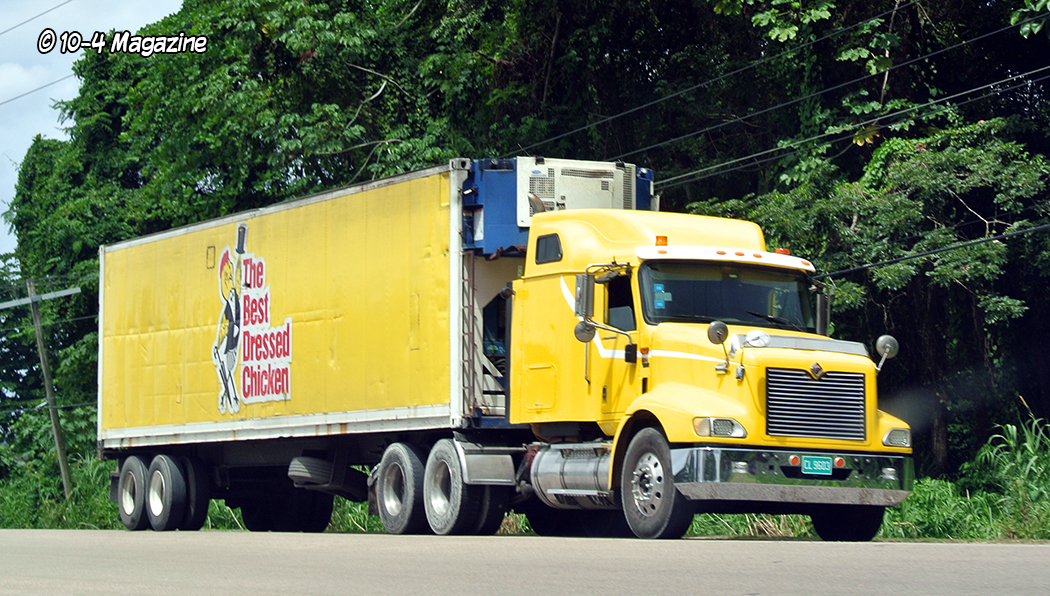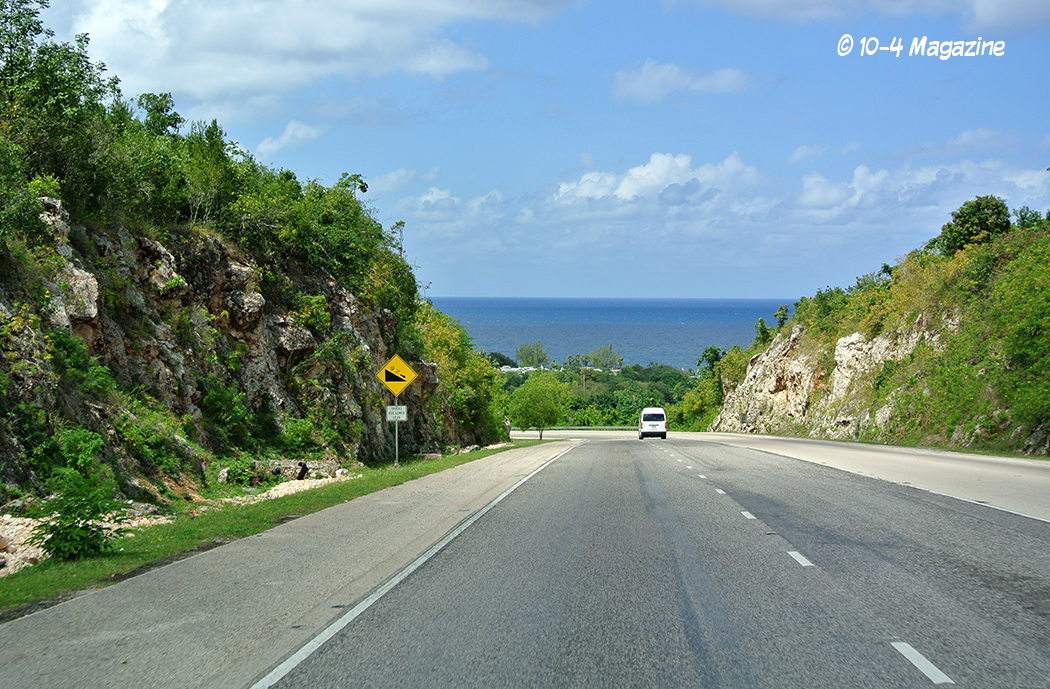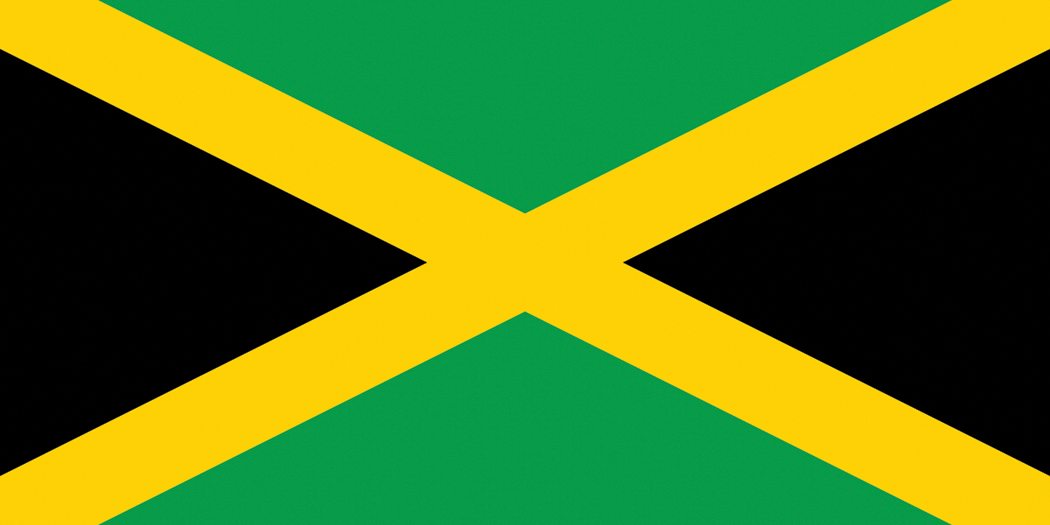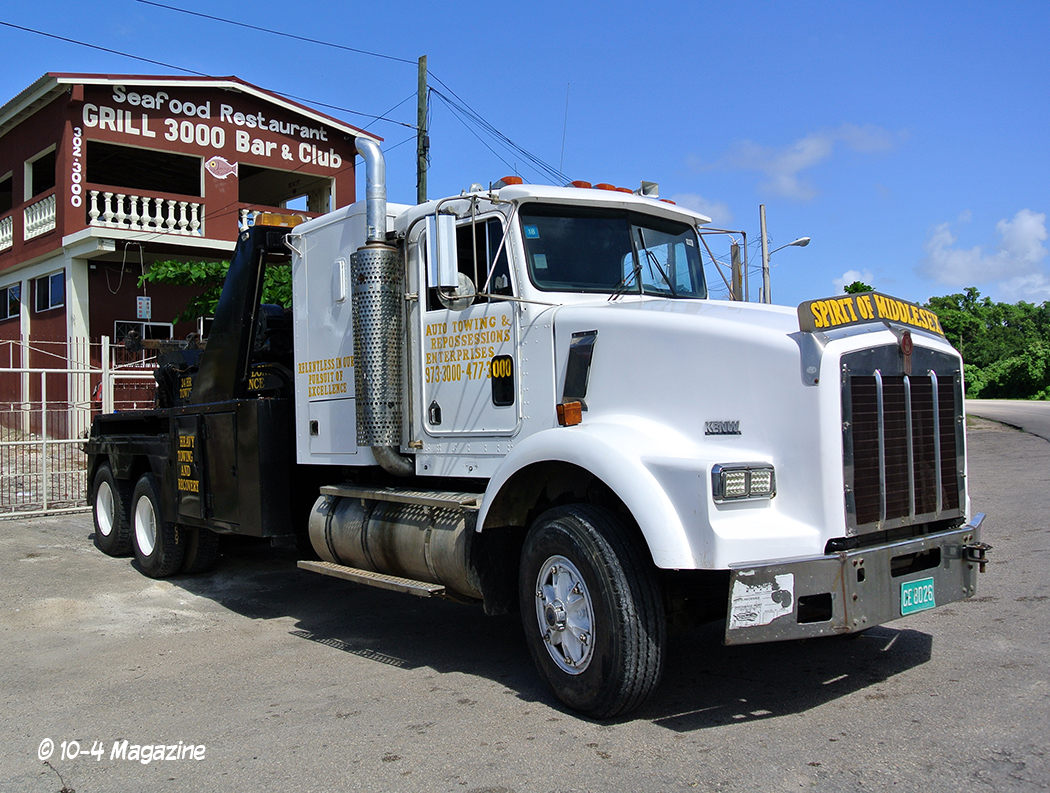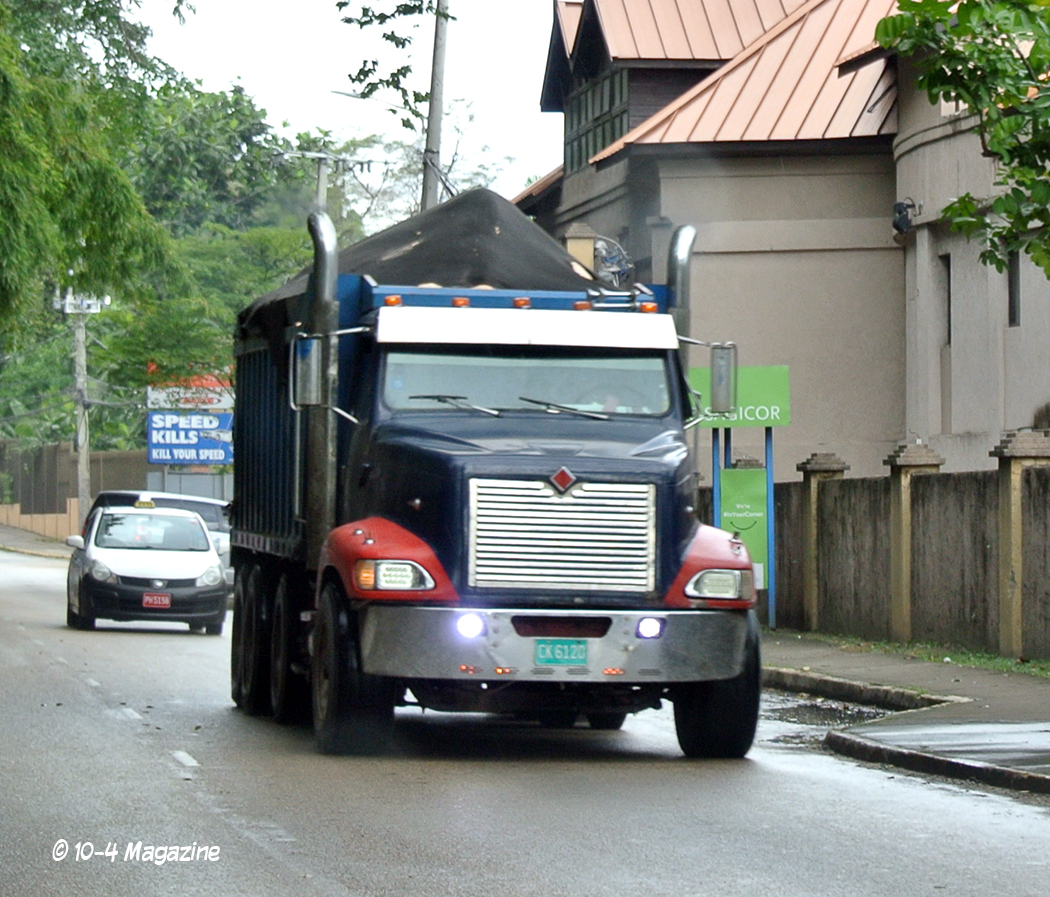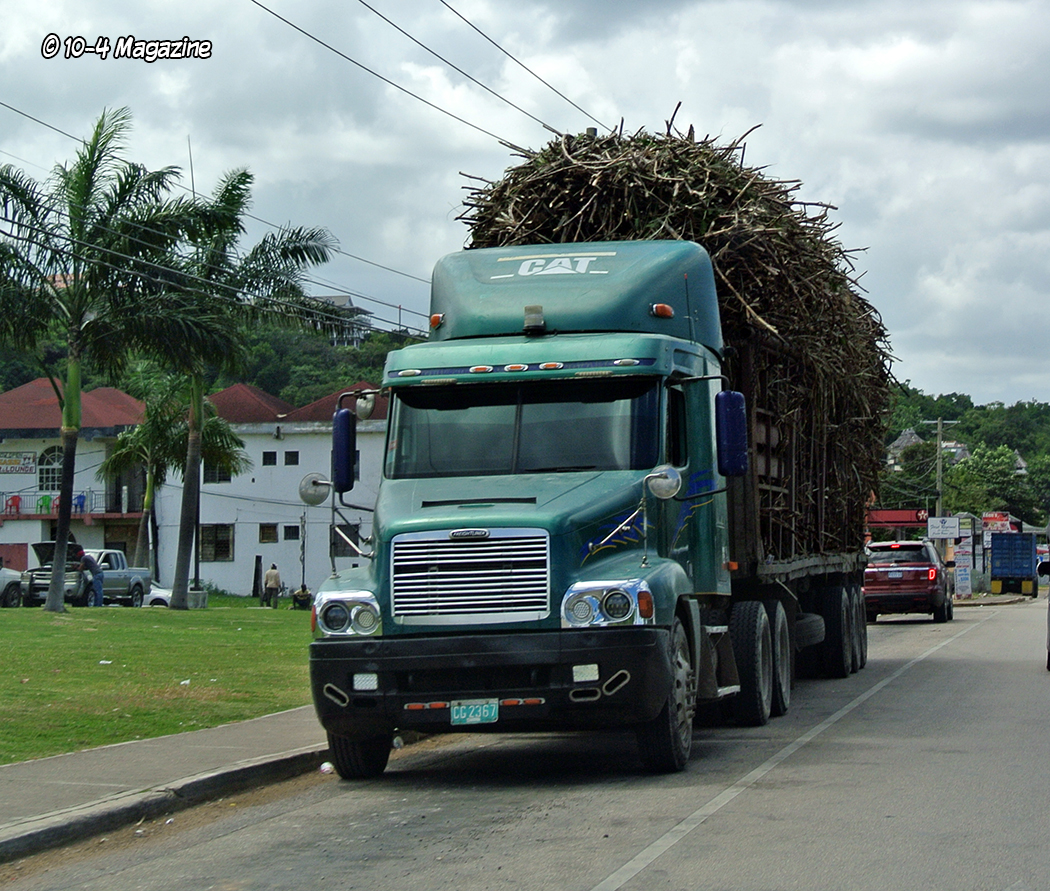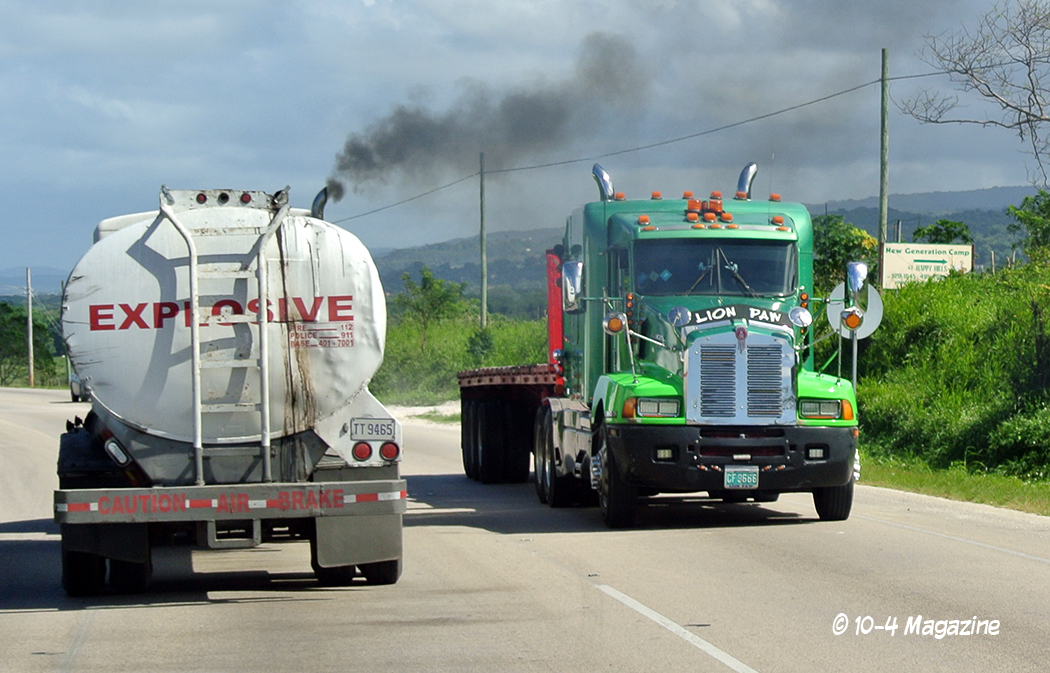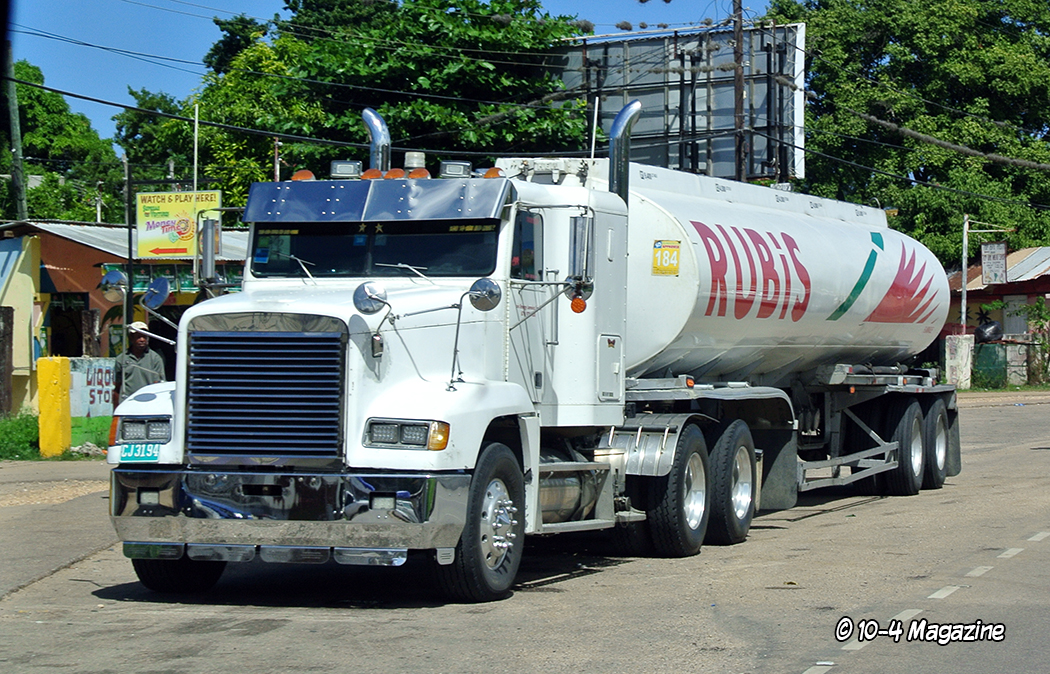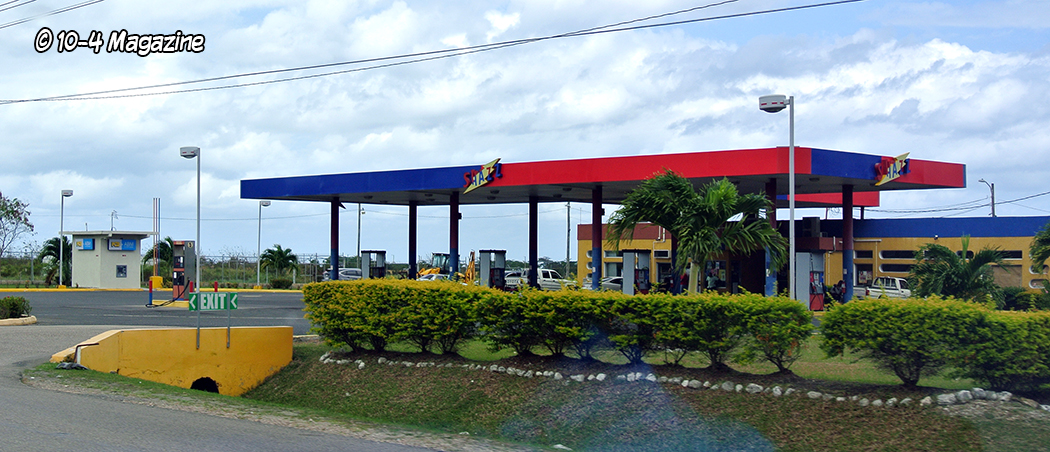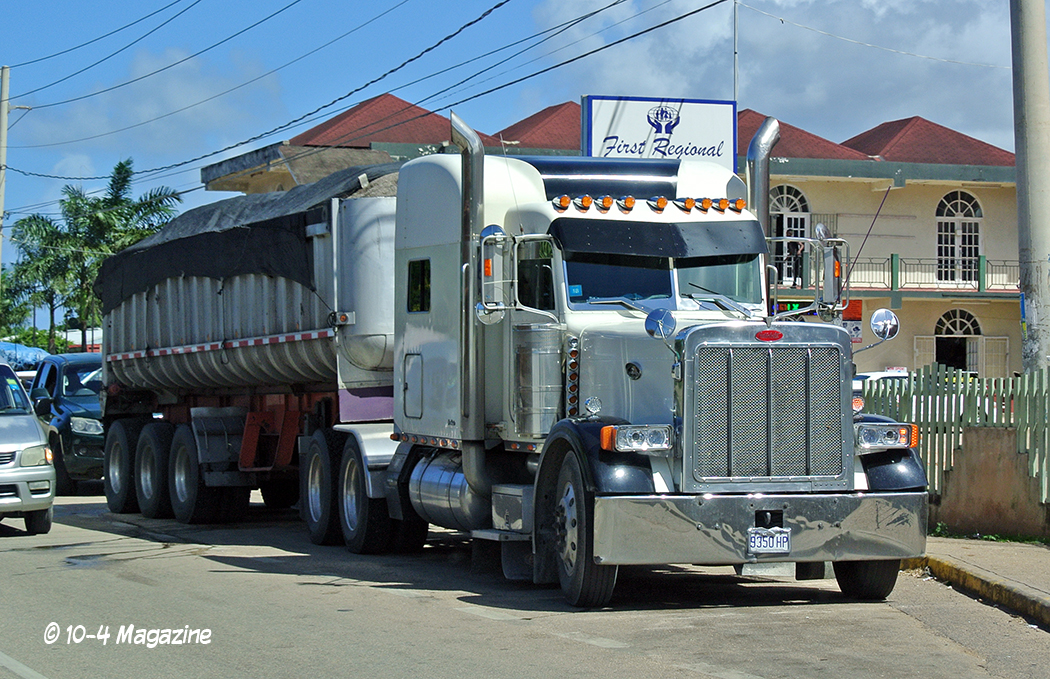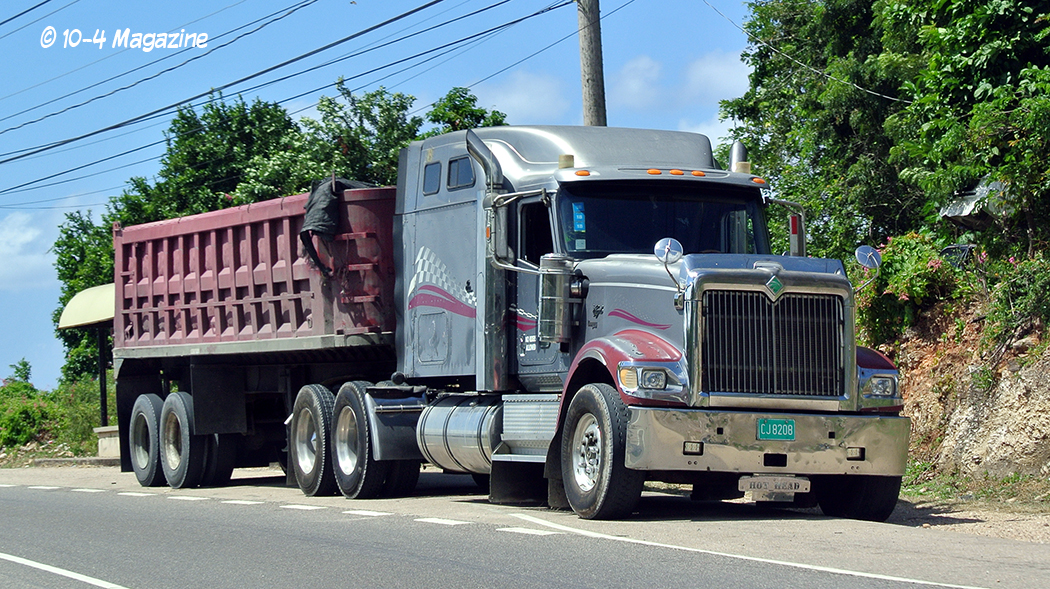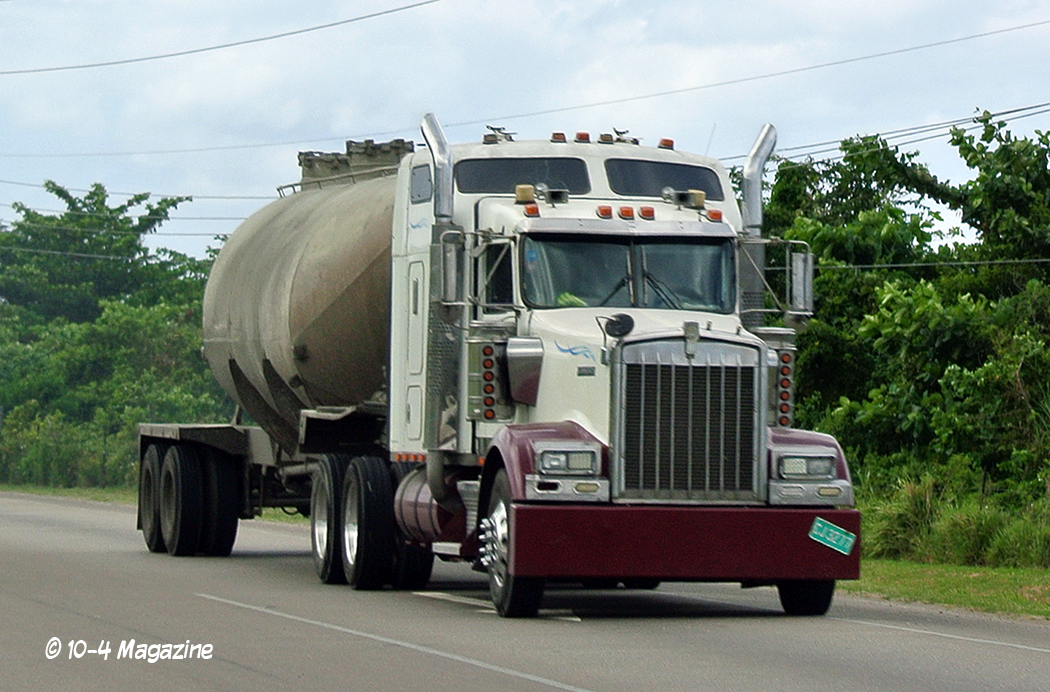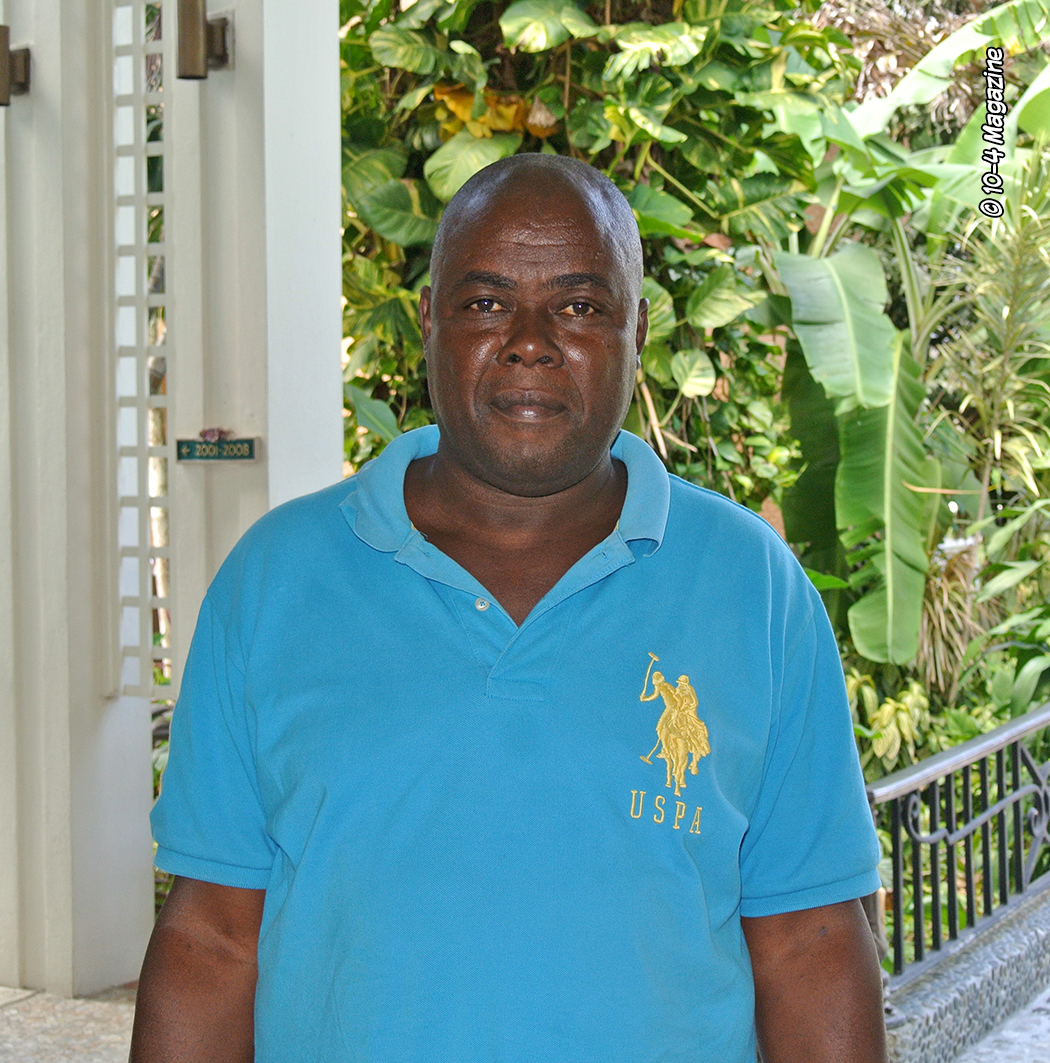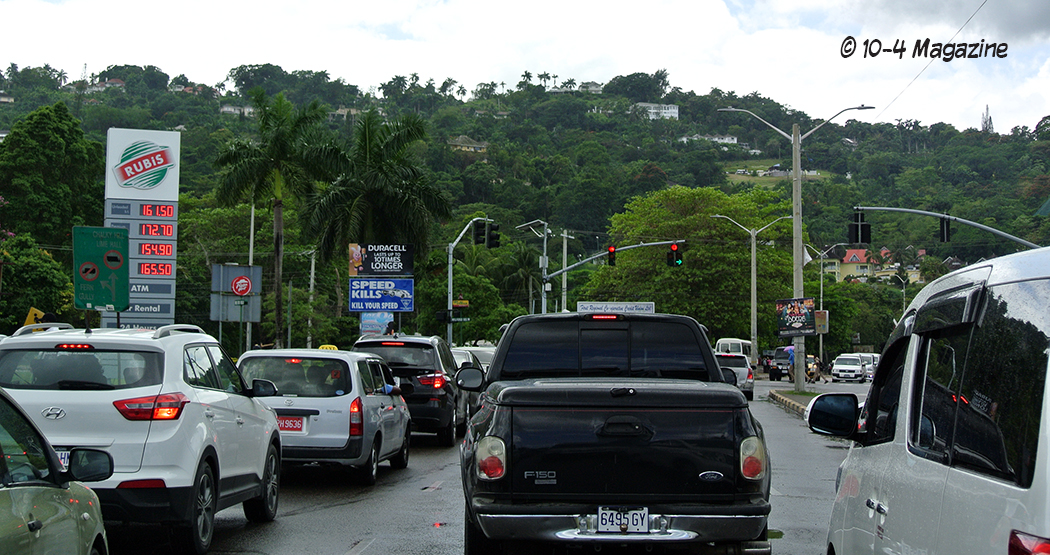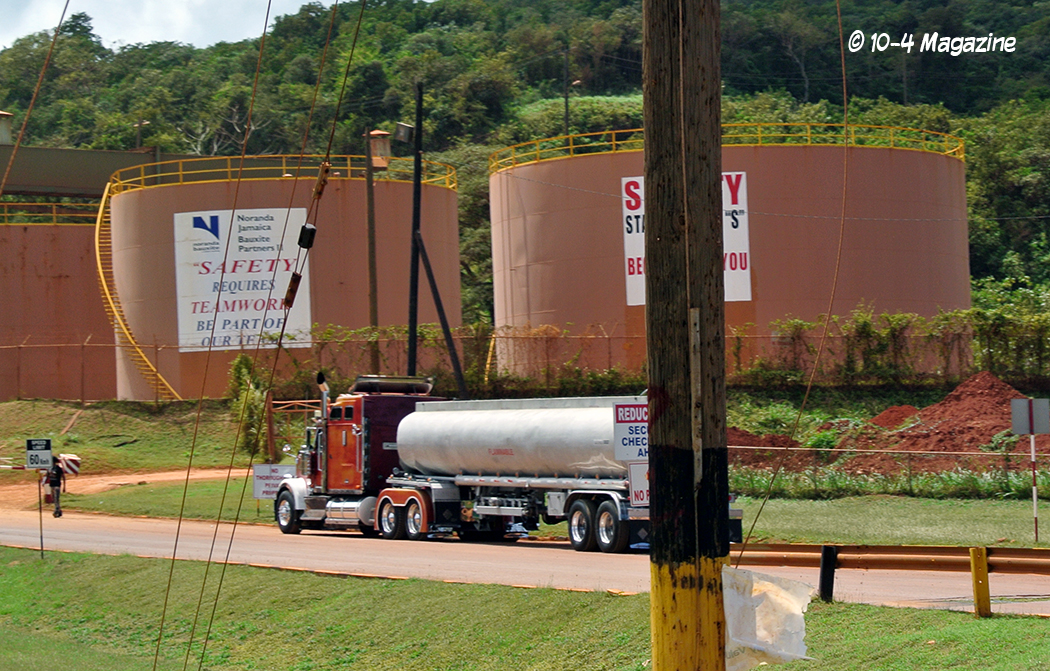When we visited Jamaica last year, I was really surprised to see American Class 8 trucks there working hard. In fact, in the Class 8 market, it was ALL American trucks! Almost all of them were older, way older than what we are used to seeing in the States hauling freight on a daily basis, but since Jamaica doesn’t have any of our emissions restrictions, it is possible for them to operate these older, classic trucks and still let them earn their keep. It did my heart good to see them!
The overwhelming majority of these trucks are Internationals, but I saw Freightliners, Kenworths, Peterbilts, Macks and Volvos, too. There are many shops scattered throughout the island country with qualified mechanics that can keep all these old classics running in tip-top shape. Since there are lots of hills and grades in Jamaica, Jake brakes are also very important, and can be heard throughout the country. Blue Mountain is the highest peak on Jamaica, and it is just over 7,400 ft. in elevation.
The entire island is 146 miles long and about 51 miles across at its widest point, so it was really surprising for me to find that there was a need for trucks the size of our Class 8 variety. The roads in Jamaica are not superhighways – the biggest ones, like the North Coast Highway (the one on which we traveled from Montego Bay to Ocho Rios and back), are two lanes with the occasional center lane for turns or passing. I’m not terribly clear if the passing is a legal maneuver or not, I just know most drivers used it for that when they wanted to get around slower traffic ahead of them. There are also pretty large shoulders that are used by slower vehicles when they happen to either notice (or care) that they were holding up traffic behind them.
The main roads in Jamaica are in pretty good condition – the surface is smooth and even, and there are many places any size vehicle can pull off to grab food or fuel, or just take a break and take in the view. And the views are AMAZING! You can see the turquoise of the Caribbean from the highway at almost every bend in the road. The hills and mountains are also breathtakingly beautiful along the other side of the road, so you have plenty to see when you do stop or are able to glance away for a second. The secondary roads in Jamaica, and most of their roads are secondary, are in much worse shape. One driver told us that in America we have potholes in our roads, but in Jamaica they have roads in their potholes! We rode on very few back-roads while there, but on the ones we did ride on, I would have to agree with his assessment.
I had questions about trucking in Jamaica, so I asked my friend Caren Simpson, who is the director of guest services at Sandals Ochi Beach Resort in Ocho Rios, if she knew anyone that would be willing to talk to me about it. I knew her father and grandfather had been in the trucking industry there, so if anybody would know someone, it would be Caren. Turns out her brother Robert Simpson has been a driver in Jamaica for 23 years now, and he was willing and available to talk with me. Score!
Robert came to the resort to meet with me and answer my questions, which I deeply appreciated. I wanted to know about a CDL, if there was some sort of special license requirement to drive a commercial vehicle, how one learned to drive one, and what type of testing, if any, it takes to get the license. Turns out, Robert was taught by his father, same way I was, but he was able to get his “Motor Cars & Trucks” license right away. In order to pull trailers in Jamaica, one must take a learning course and then pass a test for a “TT” endorsement, pay a fee, and then they can pull 45’ trailers. As you can imagine, with import and export in an island country, hauling sea containers is a pretty big chunk of the trucking industry there.
There are no physical requirements to hold a commercial driver’s license (save the very first time you get one at age 18 or after) and they must be renewed every five years. If you have special endorsements, such as the TT or what we would call a hazmat (which is necessary to haul gas), after taking the required courses and passing them, they are yours forever, as long as you pay the extra fee upon renewal. If you decide you don’t need them any longer, you can drop them but add them again later without retaking the course or test – just pay the fee.
There are no hours of service rules in Jamaica – drivers there can work 20 hours a day if they want to. They are basically regulated by their employers, and how many hours they will let their drivers work. If you want to make more money, you simply work more hours.
There is only one government scale house on the island, which is in the Harbor View area of Kingston, the capital of Jamaica. There, they do check weight, but not much else. Each vehicle must have stickers on it that are good for six months – one is for Transport Authority and the other is for Vehicle Fitness. During March and April, the police will be out more heavily to check for these windshield stickers to be sure that all vehicles are current and in compliance. Inspections are necessary to get these CC and PPV stickers.
Robert shared with me that he drives a 1994 Mack every day, equipped with a 275 Mack motor and an 8-speed Eaton transmission. His rig is a straight truck – a 5,000-gallon tanker that he hauls water with. Since he no longer uses his TT endorsement, he dropped it from his license. Turns out, it’s very expensive to keep it, especially when he doesn’t need it. All traffic in Jamaica drives on the “wrong” (left) side of the road, but when they import our old trucks to the island, they often leave the steering on the left. So, I asked Robert if it was awkward to drive them like that, and he said, “No, it isn’t. And I have no problem going from the car to the big truck and back again.” I guess I’ll just have to take his word for it.
There are many owner operators on the island who really take pride in their rigs – we even saw girls polishing fuel tanks on a W900 in Runaway Bay! We saw many with chrome and lights and paint jobs to be proud of. There would be many more, from what I understand, if they could just get the trucks there. There were plenty of guys who asked us how much trucks cost in the United States, and then told us how much money could be made if we could get one over there for them. Apparently, for Jamaicans, owning their own older American truck is a dream for many.
I know this, trucking in Jamaica would be very different from trucking in North America. If you ever get the opportunity to do it, I have a couple tips for you: #1 Look out for the goats that roam alongside the road anywhere and anytime, freely grazing; and #2 Watch out for the police standing alongside the road. They simply stand there on the side of the road, shooting their radar gun at passing vehicles, then point at the offending speeder, motioning them to pull over, so they can write them a ticket. And that goes for anyone driving in Jamaica – in a big truck or small car. I don’t know if I’ll ever get the chance to do it, but “Trucking in Jamaica” sure would be fun to try! Yeh, mon!!

